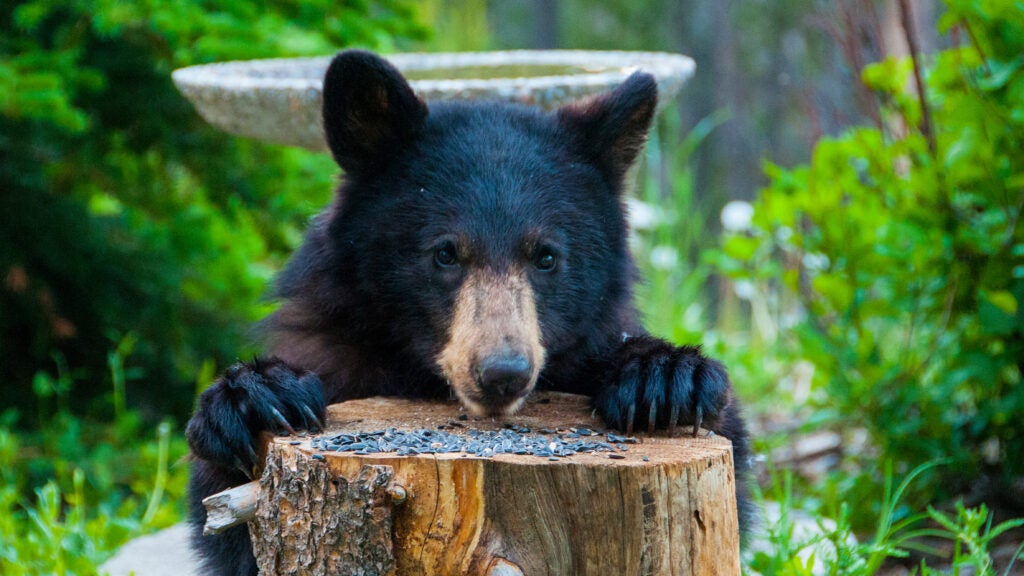No products in the cart.
Outdoor Adventure
Bear Breaks into California Classroom and Eats Students’ Snacks
Don’t miss a moment of the 2024 Tour de France! Get recaps, insights, and exclusive takes with Velo’s daily newsletter.
Sign up today!.
Last week, California charter school teacher Elaine Salmon left her classroom for a few minutes to make some copies. When she returned, there was a pupil behind one of the desks that she hadn’t counted on: A young black bear. Worse, the bear had located the kids’ earthquake crisis kits, which contained snacks. When Salmon discovered the bear, it was midway through one of the emergency granola bars.
Salmon quickly called her husband, Ian Sawrey, who happens to be a bear removal expert. (The charter school is located in Pine Mountain Club, a rural part of the state north of Los Angeles where bear encounters are common.) Sawrey was able to escort the bear out of the building without issue. No one—including the bear—was harmed in the incident.
Over the last year, Sawrey has responded to hundreds of bear-related incidents and break-ins, he told news outlet KGET. In some cases, the bears have broken into homes in broad daylight while the occupants were home. Some of these nuisance bears are so desensitized that they don’t respond to shouting, loud noises, or any other common bear-deterrent methods. Some bears are even repeat offenders. In Lake Tahoe California, one bear, dubbed Hank the Tank for his rotund figure and 500-pound frame, was linked to nearly two-dozen break-ins. In Lake Tahoe, Pine Mountain Club, and other mountain towns, residents have gone so far as to lock doors and windows, carry airhorns, and place alarms and spiked bear “unwelcome mats” near entryways to help keep bears from breaking in.
“Yes, we do live with nature. Yes, we do live with bears, but the bears have crossed a line,” Sawrey told KGET.
However, it’s likely that the bears aren’t consciously aware of such lines. Instead, they’ve become trained over months or years of experience to associate human hangouts with easy meals (After all, it’s much more energy-efficient to obtain a meal by eating some trash than wandering for miles in search of a berry patch or carcass). Over time, these bears have also been trained to associate human beings with minor nuisance—not real danger—which is why they learn to ignore noises and waving arms.
The result is dangerous for humans. It’s also dangerous for bears. Bears who get into trash sometimes ingest non-food items, which can result in intestinal blockages. In severe cases, such blockages can cause a bear to effectively starve to death. The other issue is that just one good trash meal (or, say, delicious emergency granola bar) is enough for a bear to begin associating human homes with food rewards. If the bear becomes overly habituated, it has to be euthanized.
If you live in bear country, Kara Van Hoose, public information officer for Colorado Parks and Wildlife, recommends doing as the residents of Pine Mountain Club are: Making town as inhospitable for bears as possible.
“Bears are really resourceful and know how to open cars. They can open doors into your home. The best way to keep them out is to keep those doors locked,” she told Backpacker in a recent interview about bear safety. She also recommends carrying bear spray, even if you’re in your own yard, if you live in the heart of bear country. That sends a strong physical message that bears aren’t welcome.
“We want bears to stay wild,” Van Hoose says. The secret, she emphasizes, is constant vigilance. “When you leave out bird feeders or your trash, you’re contributing to the habituation of that bear, and when bears become comfortable around humans, that leads to conflicts.”
Source link

